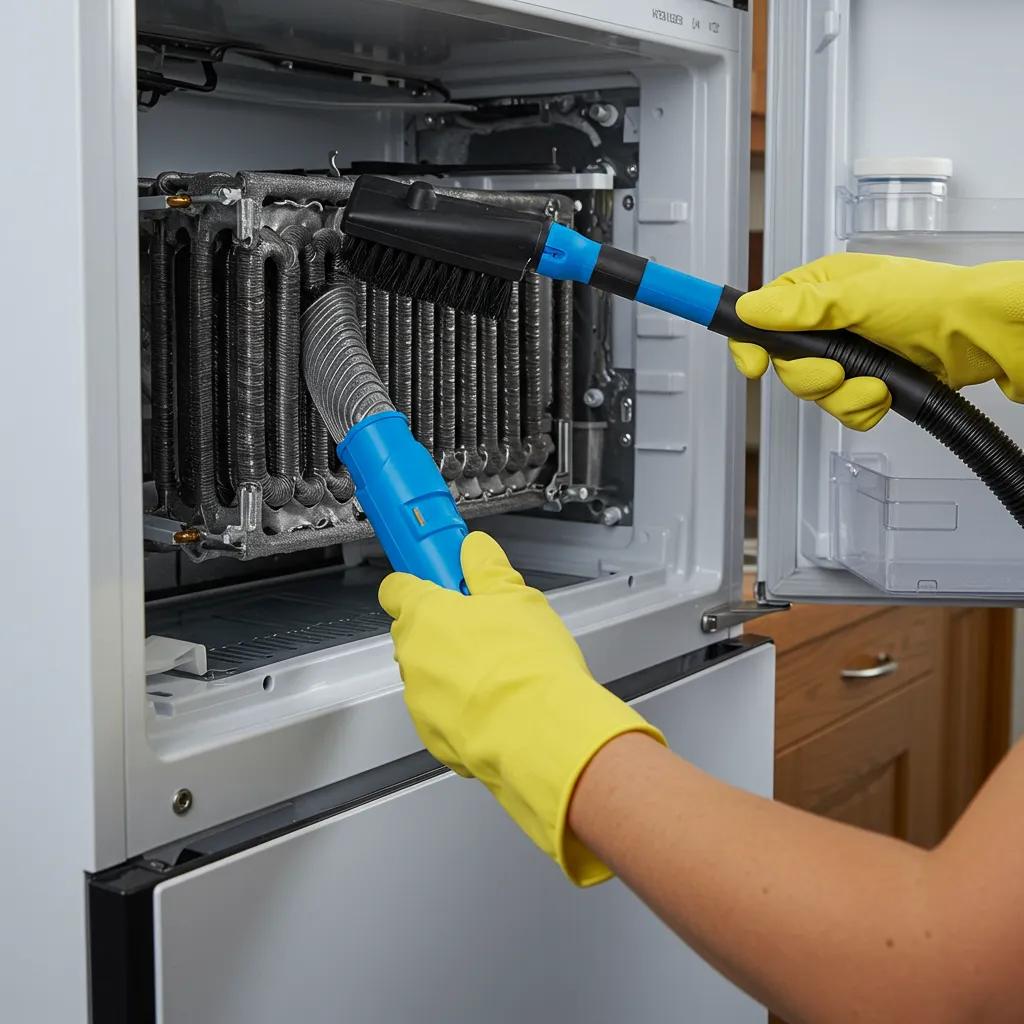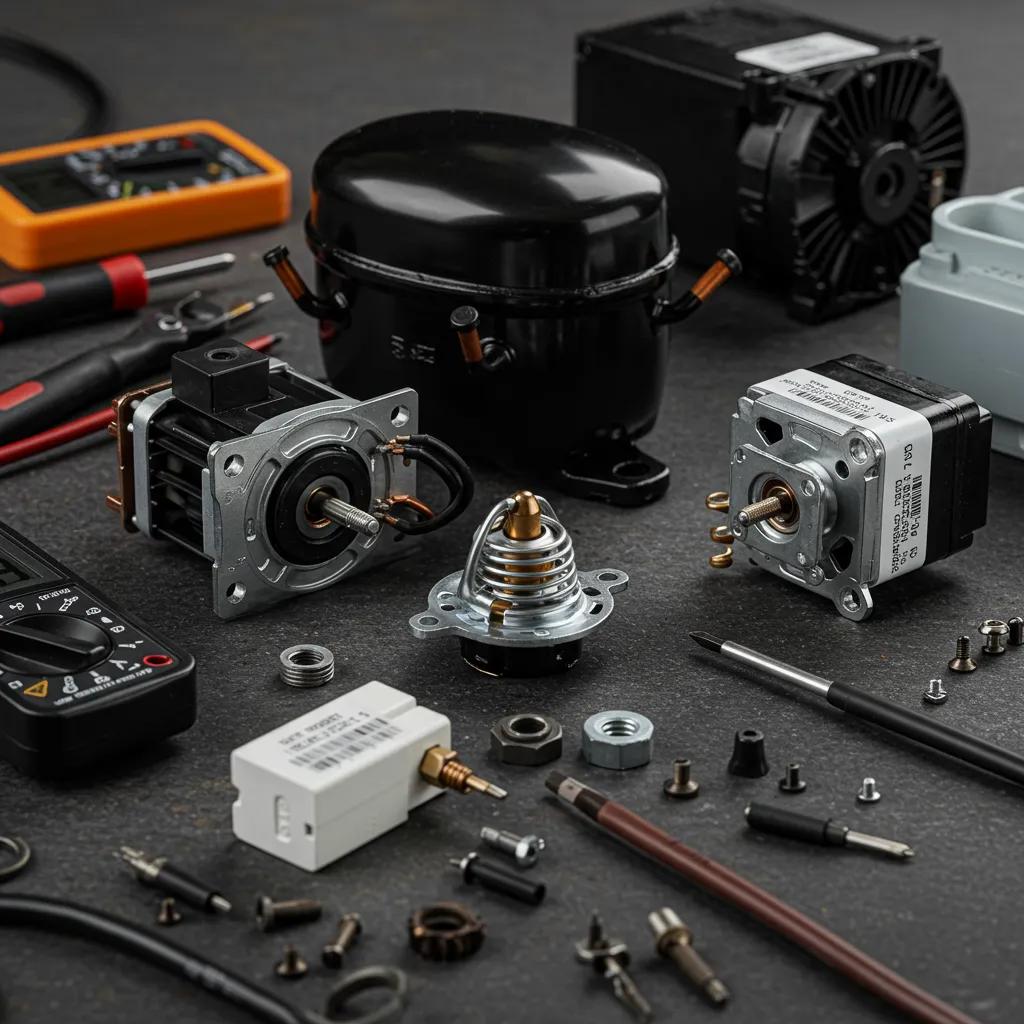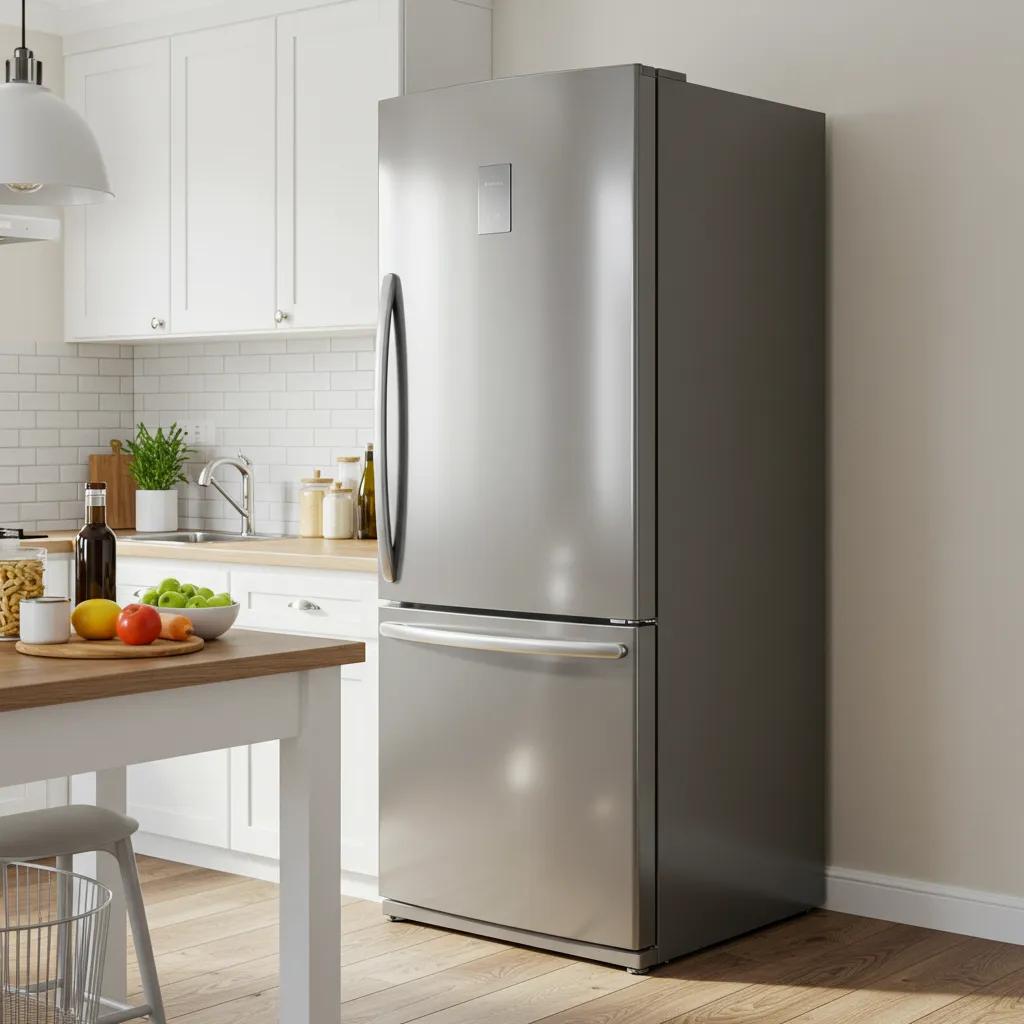Refrigerator Repair FAQs: What Every Homeowner Needs to Know
Refrigerator repair FAQs and tips begin with understanding why your fridge might not be cooling, is leaking water, or is making strange noises. They conclude with expert strategies to get your appliance back in top shape and prevent future issues. Nearly 40 percent of refrigerator service calls are due to cooling failures, which can lead to spoiled groceries and costly emergency repairs. In this comprehensive guide, you’ll uncover the root causes of cooling problems, find step-by-step solutions for common malfunctions, learn when it’s time to call a professional technician, discover essential maintenance routines to extend your fridge’s lifespan, get clear cost estimates, explore troubleshooting tips specific to popular brands, and understand the inner workings of key components. All of this is brought to you by ProStar Appliance Repair’s dedication to providing reliable, prompt service. For a complete look at our home appliance solutions, visit the ProStar Appliance Repair homepage.
Why Isn't My Refrigerator Cooling? Common Causes and Quick Fixes
A refrigerator that isn’t cooling properly often has restricted airflow, a failed component, or issues with its control system. Identifying whether the problem lies with the condenser coils, evaporator fans, compressor, or thermostat can help restore consistent temperatures and prevent food spoilage. Here are the primary malfunction categories and actionable solutions.
What Do Condenser Coils and Evaporator Fans Do for Cooling?
Condenser coils release heat that’s been removed from inside the refrigerator, while evaporator fans circulate cold air throughout the cabinet to maintain even temperatures. When dust or pet hair builds up on the coils, heat dissipation suffers, and internal sensors might cause the compressor to run constantly without achieving the desired cold. Similarly, a faulty evaporator fan leads to warm spots and uneven cooling.
- Clean your condenser coils every six months using a coil brush and vacuum attachment.
- Check the fan blades and housing; replace the fan if it’s drawing too much power or making grinding sounds.
Regular maintenance of your coils and fan checks ensures your refrigeration system operates at its best, leading to fewer compressor cycles and lower energy bills.
How Does a Faulty Compressor or Thermostat Impact Refrigerator Cooling?
The compressor is responsible for pressurizing refrigerant and circulating it through the coils, while the refrigerator’s thermostat manages compressor cycles to keep temperatures steady. If the compressor loses lubrication or its internal valves are damaged, refrigerant flow is reduced, resulting in a lukewarm interior. An inaccurate thermostat can cause cycles to run too long or too short, leading to frost buildup or temperature fluctuations.
- Listen for a humming sound from the compressor that doesn’t start; electrical issues often precede mechanical failure.
- Test the thermostat’s continuity with a multimeter; replace it if it doesn’t open or close at the correct temperatures.
Catching compressor and thermostat failures early can prevent secondary problems like freezer blockages and excessive energy consumption.
Common Refrigerator Faults and Compressor Issues
Insufficient cooling and temperature fluctuations are among the most common refrigerator problems, often linked to airflow restrictions, thermostat issues, or dirty coils. Compressor failure, a significant and expensive issue, is frequently caused by dirty condenser coils, low refrigerant levels, or internal wear over time.
This information directly corroborates the article’s sections on why a refrigerator might not be cooling and the specific causes of compressor and other common malfunctions.
When Should I Clean or Replace Refrigerator Parts to Fix Cooling Issues?
Regularly cleaning coils, fans, and vents helps maintain proper heat exchange and air circulation. Replacing worn door gaskets, defrost heaters, or temperature sensors can prevent temperature drift and leaks.
- Inspect condenser coils and evaporator fans for any debris every three months.
- Check door gaskets for cracks or signs of compression loss; replace them if air infiltration is reducing cooling efficiency.
- Evaluate defrost heaters and sensors if you notice frost accumulating on the evaporator coils.
Proactive maintenance of these parts reduces stress on major components, delaying the need for extensive repairs or a complete system replacement.
What Are the Most Common Refrigerator Problems and How Can I Solve Them?
Besides cooling issues, homeowners often deal with freezers that aren’t cold enough, water leaks, unusual noises, and ice maker malfunctions. Addressing these problems promptly can prevent food loss and water damage.
How Do I Troubleshoot a Freezer That Isn't Freezing Properly?
Freezer temperature problems are frequently caused by a faulty defrost system, worn door gasket, or a refrigerant leak.
- Confirm that the defrost timer is advancing; if it’s stuck, ice can build up on the evaporator, blocking airflow.
- Inspect the freezer door seal for any gaps; a poor seal lets warm air in and causes frost to form.
- Monitor the refrigerant pressure; low refrigerant levels will lead to warmer performance and strain the compressor.
A systematic check of the defrost system and door seals can identify most freezing failures before you need to call for professional help.
What Causes Refrigerator Water Leaks and How Can I Fix Them?
Water leaks typically originate from a clogged defrost drain, a malfunctioning water inlet valve, or a misaligned water filter housing.
- Clear any frozen debris from the defrost drain using warm water and a soft brush.
- Test the water inlet valve solenoid; replace the valve if it doesn’t open when it should during fill cycles.
- Make sure the water filter housing is properly seated to prevent drips from bypassing the seal.
Keeping the drain path clear and checking the fill valve’s operation can stop leaks and protect your floors.
How Can I Identify and Resolve Strange Noises From My Refrigerator?
Different mechanical parts make distinct sounds when they aren’t working correctly. Knowing the common refrigerator noises and their likely causes can help you pinpoint the needed repairs more efficiently.
| Sound Type | Likely Source | Recommended Action |
|---|---|---|
| Loud Humming | Compressor overload | Clean coils; test start relay; replace compressor if locked |
| Rattling or Vibrations | Loose condenser fan | Tighten mounting screws; inspect fan motor bearings |
| Clicking Repeatedly | Defrost timer cycling | Test timer continuity; replace timer module |
| Squealing or Grinding | Evaporator fan motor | Lubricate motor shaft; replace defective fan assembly |
Identifying noise patterns can shorten diagnostic time and lead you directly to the right repairs.
Why Isn't My Ice Maker Working and What Are the Repair Steps?
An ice maker relies on a consistent water supply, a functional fill solenoid, and a properly timed ice maker assembly.
- Turn off the power and check the water line for any kinks or blockages.
- Listen for the fill valve to click during a harvest cycle; replace it if it’s silent or leaking.
- Manually test the ice maker module by simulating a full cycle; replace the module if harvest cycles repeatedly fail.
Following these steps can restore ice production and prevent the need to replace the entire assembly.
When Should I Call a Professional Appliance Repair Technician? Signs and Safety Tips
Even if you’re comfortable with DIY repairs, some refrigerator issues require expert diagnostics and specialized tools. Knowing when to schedule a service call can protect both your appliance and your personal safety.
What Are the Key Indicators That Require Expert Refrigerator Repair?
- The compressor is consistently overheating or failing to start.
- There are refrigerant system leaks or seals that require EPA-certified handling.
- Electronic control board errors or persistent diagnostic codes appear.
- Complex sealed-system repairs are needed, going beyond simple part replacements.
Entrusting these advanced malfunctions to trained technicians ensures repairs are done safely, meet all codes, and preserve your manufacturer’s warranty.
How Does Professional Repair Save Money Compared to DIY Fixes?
Professional appliance repair offers precise diagnostics, uses genuine OEM parts, and provides warranty protection, all of which reduce callbacks and the need for emergency part orders. Experienced technicians can identify hidden issues—like refrigerant undercharge or control board latency—that DIY attempts might miss, preventing costly secondary damage.
What Safety Precautions Should Homeowners Follow Before Attempting Repairs?
- Always shut off power at the breaker before working on internal components.
- Wear protective gloves and eye protection when handling refrigerant lines or sharp metal edges.
- Never open sealed-system components without the proper EPA certification.
Following these precautions minimizes the risk of personal injury and helps keep your warranty valid when a professional service call is necessary.
How Can I Maintain My Refrigerator to Extend Its Lifespan? Essential DIY Tips
Regular maintenance helps keep your refrigerator cooling efficiently and prevents minor issues from becoming major problems.
What Is the Best Way to Clean Refrigerator Coils for Optimal Performance?

Condenser coils are crucial for removing heat; when they get dirty, cooling efficiency drops, and the compressor has to work harder.
- Unplug the refrigerator and find the coils, usually located behind or underneath the cabinet.
- Use a coil brush and vacuum attachment to remove dust and debris.
- Wipe the coils with a damp cloth and let them dry completely before plugging the unit back in.
Consistently cleaning your coils helps maintain stable temperatures and lowers your energy bills.
The Role of Maintenance in Refrigerator Energy Efficiency
Maintenance procedures play a major role in ensuring refrigeration equipment operates at maximum efficiency, leading to substantial energy savings. Studies indicate that improving maintenance policies, such as regular cleaning and monitoring of components, can significantly reduce energy consumption.
This research reinforces the article’s advice on how regular maintenance, particularly cleaning coils, contributes to optimal performance and lower energy consumption.
How and When Should I Replace Refrigerator Door Gaskets?
A tight door gasket is essential for maintaining a sealed cold environment. Inspect your seals every three months for any cracks or loss of flexibility.
- Clean the gasket surfaces with a mild detergent to prevent mildew buildup.
- Test the seal’s effectiveness using the dollar-bill trick: the bill should offer resistance when you try to pull it out with the door closed.
- Replace gaskets that show permanent gaps or tears to ensure proper cabinet pressure is maintained.
Replacing worn gaskets proactively can prevent frost buildup and reduce strain on the compressor.
What Are the Ideal Temperature Settings for Energy Efficiency?
Maintaining the correct temperatures balances food safety with energy conservation:
- Refrigerator compartment: 37–40 °F (3–4 °C)
- Freezer compartment: 0 °F (–18 °C)
These settings ensure your food stays fresh while minimizing the compressor’s workload and reducing peak electricity usage.
How Do I Decide Between Repairing or Replacing an Older Refrigerator?
Consider the cost of repair, the age of the appliance, and its energy efficiency:
- If a repair costs more than 50 percent of a new unit’s price and the refrigerator is over 10 years old, replacement often leads to lower overall expenses.
- A newer, more efficient model can cut energy consumption by up to 20 percent, helping to offset the initial purchase cost over time.
- For high-end brands known for durable sealed systems, targeted repairs can extend the appliance’s life by 3–5 years.
Refrigerator Lifespan and the Impact of Maintenance
The average lifespan of a refrigerator ranges from 10 to 15 years, with some high-end models lasting up to 20 years with proper care. Factors like maintenance, brand quality, and usage habits significantly influence longevity. Regular cleaning of condenser coils and checking door seals are crucial for efficient operation and preventing premature wear.
This research supports the article’s emphasis on essential DIY maintenance tips to extend a refrigerator’s lifespan and highlights the average expected duration of these appliances.
What Are the Typical Refrigerator Repair Costs? Factors and Estimates Every Homeowner Should Know

Repair pricing varies based on the complexity of the part, labor rates, and how common the brand’s parts are. Understanding what influences the cost can help you budget effectively and compare quotes with confidence.
Compressor and sealed-system replacements are typically the most expensive due to the need for refrigerant recovery, sourcing specialized parts, and the intensive labor involved. Ice maker modules and fan motor swaps are generally less costly, both for parts and technician time.
How Do Brand and Model Influence Repair Pricing?
Luxury and commercial-grade refrigerators, such as those from Sub-Zero or Monogram, often require specialized parts and longer wait times, making repairs more expensive than for mass-market brands. Mid-range models from Maytag, GE, or Bosch usually have more readily available parts and standardized service procedures, keeping costs more moderate.
Where Can I Request a Reliable Repair Quote From Experts?
For an accurate quote and same-day service scheduling, contact ProStar Appliance Repair’s dedicated Refrigerator Repair Services – ProStar Appliance Repair. Our transparent pricing means you’ll understand every part and labor charge before any work begins.
How Do Brand-Specific Refrigerator Issues Differ? FAQs for Popular Appliance Brands
Recognizing symptoms unique to specific brands can speed up diagnosis and ensure technicians use the correct repair procedures.
What Are Common Problems With Maytag Refrigerators and How Are They Fixed?
Maytag models often display error codes on their digital control panels. Codes like “F4 E1” typically indicate a defrost sensor failure. Replacing the defrost sensor or control board can resolve false frost detection and restore normal cooling cycles.
How Can I Troubleshoot Sub-Zero Refrigerator Sealed System Issues?
Sub-Zero sealed systems depend on factory-charged refrigerant loops. If cooling is lost without any frost buildup, it usually points to a refrigerant leak. Certified technicians can perform electronic leak detection and recharge the system to factory-specified pressures, maintaining the sealed system’s warranty.
What Do GE Refrigerator Error Codes Mean and How Can I Resolve Them?
GE refrigerators display codes such as “dE” for door alarms and “tc” for thermistor faults. Clearing these codes by resetting the power and replacing faulty sensors or control boards can resolve user-facing errors and prevent system lockouts.
What Are Frequent Repair Questions for Frigidaire Refrigerators?
Frigidaire models commonly experience ice maker harvest cycle failures due to clogged water lines or defective fill valves. Cleaning the line filters and testing the fill valve under power can restore consistent ice production without needing to replace the entire assembly.
How Do Refrigerator Components Work and Affect Repairs? Understanding Key Parts
A better understanding of each part’s function can simplify troubleshooting and clarify the scope of repairs for homeowners.
| Component | Function | Maintenance Recommendation |
|---|---|---|
| Compressor | Circulates refrigerant under high pressure | Listen for unusual sounds; test start relay |
| Evaporator & Condenser Coils | Evaporator absorbs heat; condenser releases it | Clean coils every six months |
| Thermostat | Monitors and controls temperature cycles | Verify calibration with a thermometer |
| Fan Motors & Defrost Timers | Fans distribute cold; timers manage defrost cycles | Inspect blades for debris; test timer continuity |
Understanding these core components and how they interact allows you to better follow repair estimates and confidently evaluate technician recommendations.
Your refrigerator’s performance relies on precisely engineered parts working together seamlessly. Regular inspection and maintenance of each component ensure long-term reliability and energy efficiency.
Keeping your refrigerator in excellent condition not only preserves your food and reduces waste but also extends the appliance’s lifespan and lowers your utility bills. When complex issues arise, trust ProStar Appliance Repair’s certified technicians to diagnose sealed-system faults, replace critical components, and restore optimal performance quickly. Schedule your service today through our Refrigerator Repair Services – ProStar Appliance Repair to experience prompt, transparent appliance care backed by five-star reviews on Yelp and real-time availability via our Google Business Profile.

